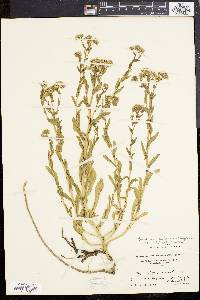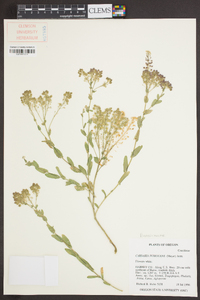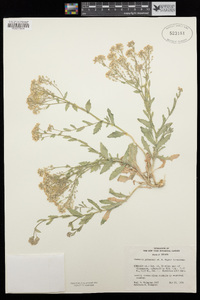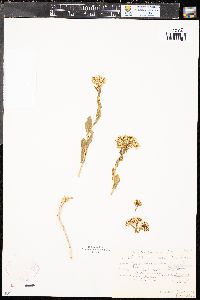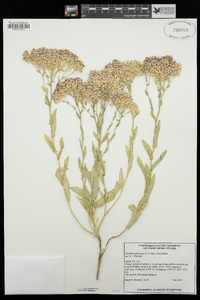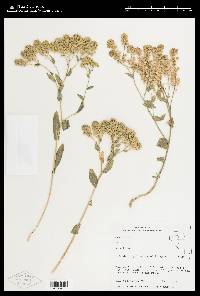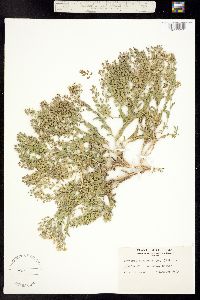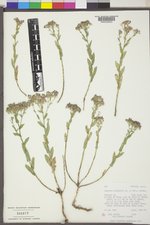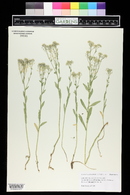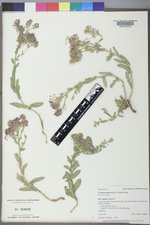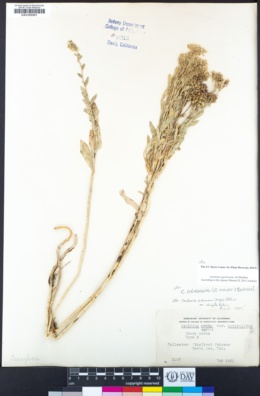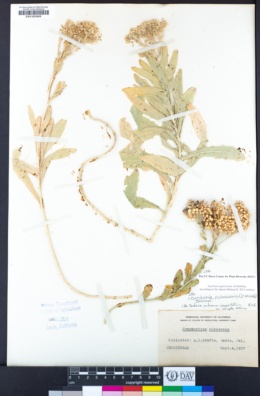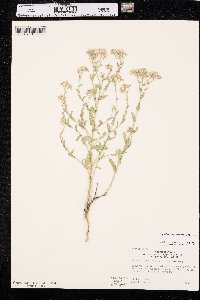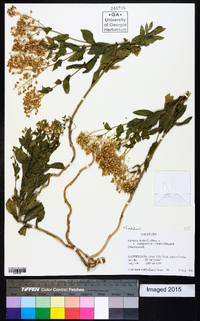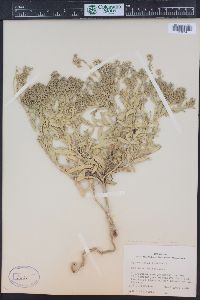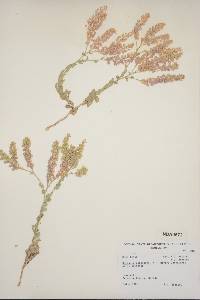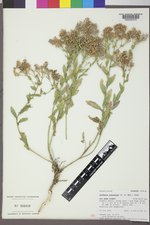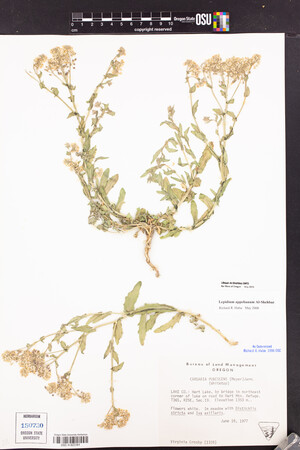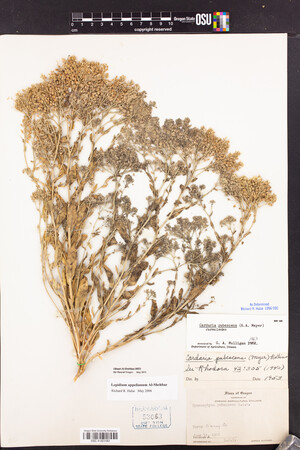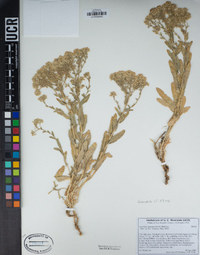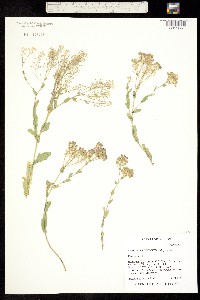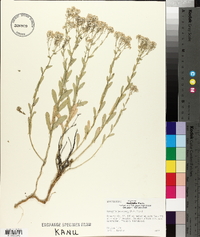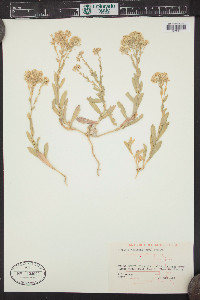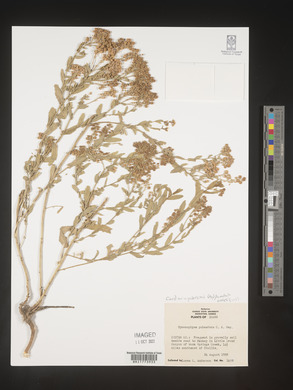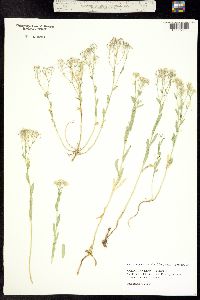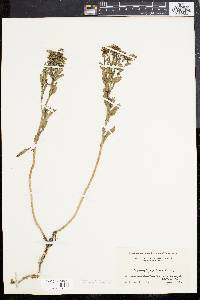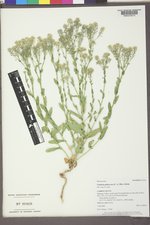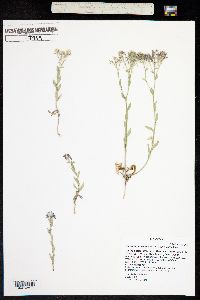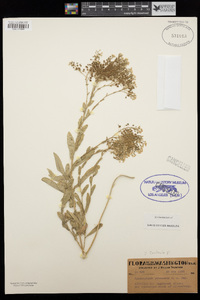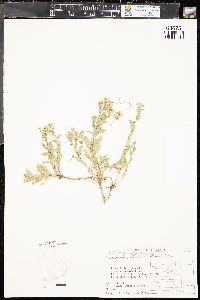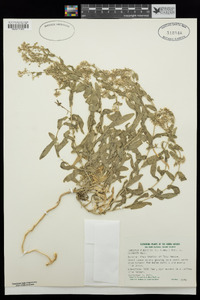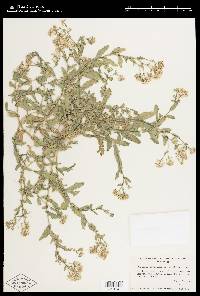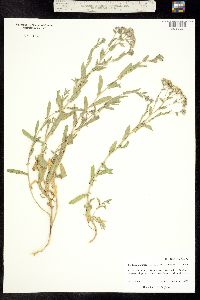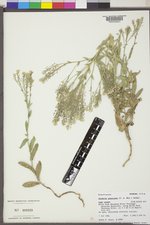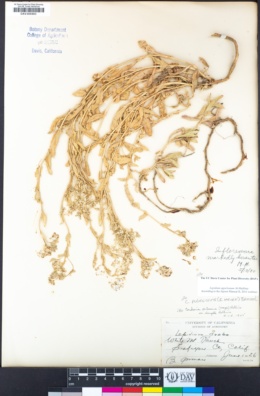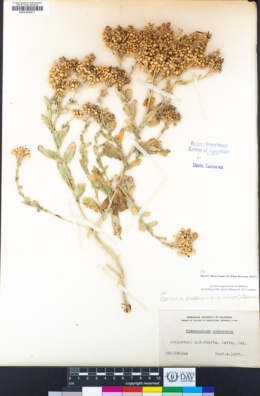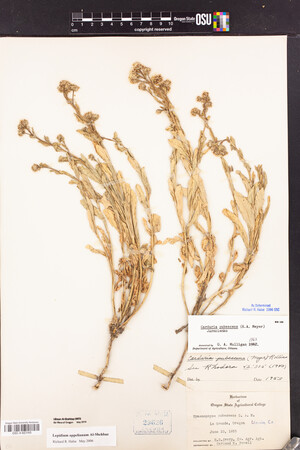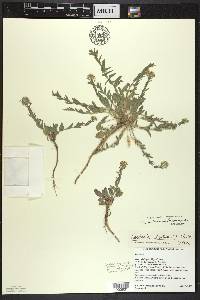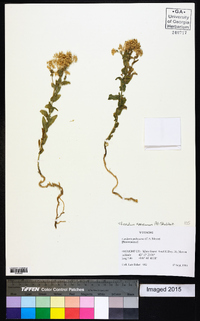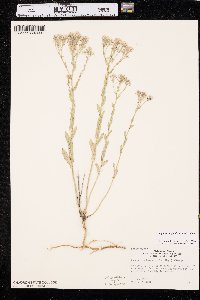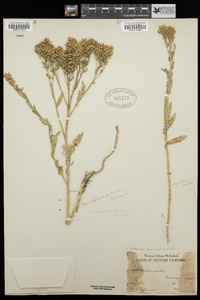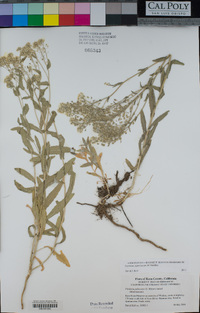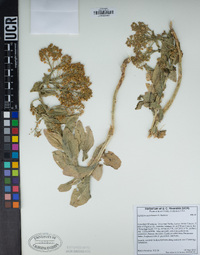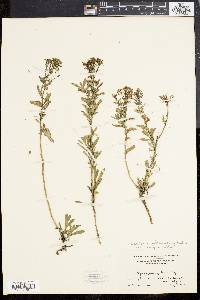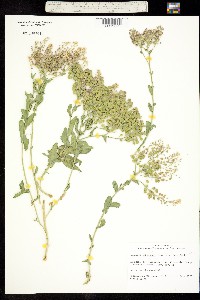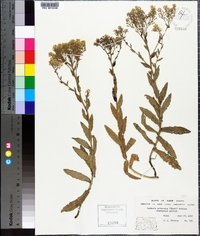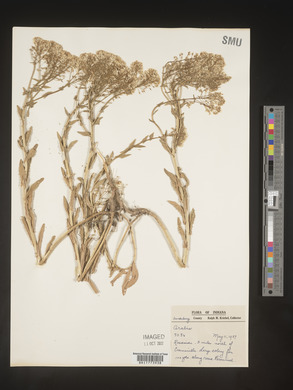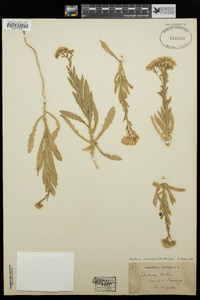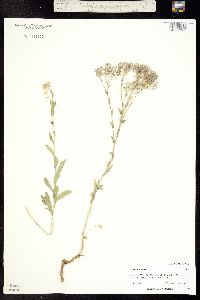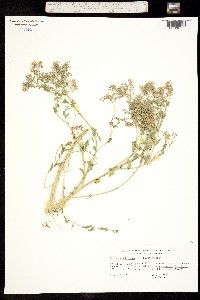
|
|
|
|
Family: Brassicaceae
Globe-Pod Pepperwort, more...whitetop, globe-pod hoarycress, globe-podded hoarycress, hairy whitetop, hoary cress
[Cardaria pubescens (C.A. Mey.) Jarmolenko] |
Perennials; (rhizomatous); often densely hirsute. Stems simple or several from base, erect or ascending, branched distally, (1-)1.5-3.5(-5) dm. Basal leaves (often withered by anthesis); not rosulate; petiole 0.5-1.5 cm; blade obovate to oblanceolate, (1-)2-6(-7) cm × 3-20 mm, margins dentate to sinuate. Cauline leaves sessile; blade oblong or lanceolate, 1-5(-8) cm × (3-)5-15(-30) mm, base sagittate, margins dentate or subentire, (surfaces pubescent). Racemes (usually corymbose, rarely paniculate), rarely elongated in fruit; rachis pubescent, trichomes often curved. Fruiting pedicels divaricate to ascending, straight or slightly curved, (terete), 3-9(-12) × 0.2-0.3 mm, pubescent. Flowers: sepals oblong, 1.4-2 × 0.7-1 mm; petals white, broadly obovate, (2.2-) 2.8-4 × 1-3 mm, claw 1-1.4 mm; stamens 6; filaments 2-2.5 mm, (glabrous); anthers 0.4-0.5 mm. Fruits (indehiscent), globose or, rarely, subglobose, (2-)3-4.4(-5) mm diam., (inflated), apically not winged, apical notch absent; valves thin, smooth, not veined, densely puberulent; style 0.5-1.5 mm. Seeds (brown or dark brown), ovoid, 1.5-2 × 1-1.5 mm. 2n = 16. Flowering May-Sep. Roadsides, sagebrush communities, alkaline meadows, waste grounds, ditch and stream sides, fields, pastures; 400-2400 m; introduced; Alta., B.C., Man., Sask.; Calif., Colo., Idaho, Mich., Mo., Mont., Nebr., Nev., N.Mex., N.Dak., Oreg., Pa., Utah, Wash., Wis., Wyo.; c Asia; introduced also in South America, other parts of Asia. Lepidium appelianum has become a noxious weed in most of its range in North America.
Perennial herb to 0.6 m tall Stem: upright or spreading, shortly hairy below, becoming less hairy upwards. Leaves: alternate, appearing to clasp the stem, to 9 cm long, to 4 cm wide, arrow-shaped, sometimes irregularly toothed. Flowers: in a dense, branched cluster (raceme). Racemes numerous. Sepals four, 2 - 2.5 mm long, and hairy. Petals four, white, bases narrowed. Stamens six. Fruit: an indehiscent pod (silicle), 3 - 4.5 mm long, 2.5 - 4.5 mm wide, inflated, rounded with a point, divided into two segments, and hairy. Seeds one per chamber. Similar species: No information at this time. Habitat and ecology: Probably introduced from Eurasia. Rare in the Chicago Region, with a single collection made in 1941 in Walworth County, Wisconsin. Look for this species in fields, along roadsides, and in disturbed areas. Occurence in the Chicago region: non-native Etymology: Cardaria comes from the Greek word kardia, meaning heart, which refers to the nearly heart-shaped seeds. Pubescens means downy. Author: The Morton Arboretum Much like the previous 2 spp., but the pubescence extending to the sep and frs; fr inflated, obovoid to subglobose, 3-4.5 נ2.5-4.5 mm; mature pedicels shorter, to 10 mm, but the racemes often more elongate at maturity; 2n=16. Native of the Middle East and c. Asia, now intr. in N. Amer. in the same kinds of places as no. 1. (Hymenophysa p.) [Cardaria draba (L.) Desv.]. Gleason, Henry A. & Cronquist, Arthur J. 1991. Manual of vascular plants of northeastern United States and adjacent Canada. lxxv + 910 pp. ©The New York Botanical Garden. All rights reserved. Used by permission. |
This project was made possible in part by the Institute of Museum and Library Services [MG-70-19-0057-19].
Powered by Symbiota


